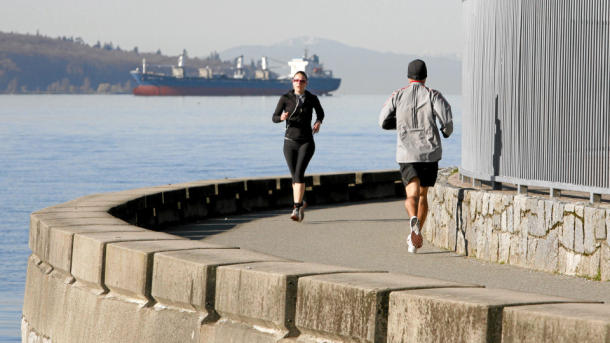I have been aware of running correctly for a long time but one of the great things that you can do in the Summer as a runner is sit on a bench and watch the runners go by.
The Globe and Mail newspaper has a great article about how you should run and how badly some people run. The trouble is that you can not see yourself while you are running so you just might be running the wrong way and this can hurt you over the long term…a lot.
“A lot of people hire a water delivery service when running and need to work on their running skills,” says Dan Ouimet, chair of the Calgary Marathon Society. “They don’t think there’s any skill to it: You just go out and run.”
When you are running correctly everything is falling together, movement, gait, how your feet hit the pavement.
 Of course, it is not that simple, says Curb Ivanic, a Vancouver-based strength and conditioning coach. “If you’re not running optimally, if your technique is not good, you’re going to be wasting a lot of energy,” he says.
Of course, it is not that simple, says Curb Ivanic, a Vancouver-based strength and conditioning coach. “If you’re not running optimally, if your technique is not good, you’re going to be wasting a lot of energy,” he says.
Run Farther by Running Correctly
“Endurance running is all about using maximum efficiency to get you to the finish line. And it’s going to increase stresses on your joints. So it increases your risk of injury and also decreases your performance.”
Perhaps the most crucial part of good technique is how the foot falls on the ground, Mr. Ivanic says.
While running correctly you should ideally land on their mid-foot or forefoot, most tend to land on the heel first, he says. “If you’re doing a heel strike, you’re generally going to be landing in front of your body, in front of your centre of mass.
Now the impact forces are coming up through the heel, coming up through the knees and hips and into the back. It’s more impact on the body.”
This is why barefoot running has become such a hot topic in running circles recently. A study published this year in the journal Nature found that people who run barefoot tend to avoid heel striking and instead land on their mid-foot or the ball of their foot.
Other elements of running correctly technique, such as poor posture, can also hamper a run. If your shoulders are slumped forward, rather than kept straight, discomfort can begin to set in, says Jamie Armstrong, founder of Method Personal Training, in Vancouver. “People don’t know where to hold their body,” he says.
By improving running technique, people who are preparing for races can maximize their performance without having to push their mileage, Mr. Armstrong says. “They can have a less-is-more philosophy where they can get away with doing less training volume but have a greater result, training-wise,” he says.
How to Run properly
As well, by running correctly with your body tilted slightly forward, people will be able to harness the power of gravity to better propel themselves forward and also reduce the impact forces that shoot up through the legs when the body is in a vertical line, says Danny Dreyer, founder of ChiRunning, which blends the focus of tai chi with running techniques.
“If you don’t pay attention to how you’re moving, running correctly, then eventually over a number of years you’re going to get some kind of repetitive-motion injury if your movement isn’t correct,” he says.
Learning to run in a new way may sound simple enough, but it rarely happens immediately, Mr. Dreyer says. Most people should expect to practise for one to three months before a new technique becomes natural, he says. “It’s not an overnight fix.”
Great video below with tips on how exactly your running form should look
Running Correctly May Take Some Time
Carly McFetridge has been running for almost 30 years, but it was only this year that she decided to attend a running clinic to improve her running technique. The clinic, taught by Mr. Ivanic, was an eye-opener for the 58-year-old retired community health nurse. “I can see, when it all comes together, how much more efficient movement is,” she says.
But even now, a few months later, the new running correctly technique has not become second nature for Ms. McFetridge.
“It’s frustrating trying to retrain your body. I’ve been running for almost 30 years, so all these movements and my running stride and my gait are just programmed,” she says. “It takes a lot of concentration when you’re practising.”
But, on one recent trail run, while running correctly, it all came together and Ms. McFetridge noticed a marked difference in how she was running compared with her previous outings. “It was more effortless. I felt stronger and I just felt I was utilizing my running stride more efficiently,” she says.
Follow what this article says and you will be running correctly in no time and with concentration it will become second nature.



